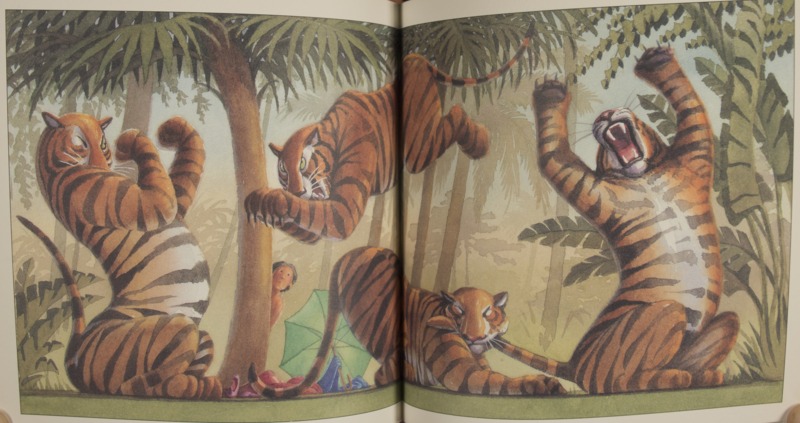The Story of Little Babaji (2002)
Dublin Core
Title
The Story of Little Babaji (2002)
Description
Furthermore, this version of Little Black Sambo rejects the dehumanization and animalization that appear in many earlier versions. In the illustration with the four tigers, Babaji stands small behind a tree. The tigers are twice or three times Babaji’s size, a realistic perception of a boy next to mature tigers. This version does not paint the boy as similar to the monstrous tigers like many versions do. Additionally, the tigers have green eyes, which are angled up to give the impression of ferocity, while Little Babaji’s eyes are the opposite; they are small and wide with fear. By not showing any similarities between the boy and the animals, Marcellino tried to “change those stereotypes that were created by writers and authors of the past” (Mikkelsen 264). In many of the older versions, Sambo had exaggerated features characteristic of pickaninnies and other various stereotypes, while in these newer images of Sambo, Marcellino draws him likes any other child and without any ‘‘othering’’ characteristics.
Mikkelsen, Nina. "Little Black Sambo: Revisited." Children's Literature 29.1 (2001): 260-66.
Mikkelsen, Nina. "Little Black Sambo: Revisited." Children's Literature 29.1 (2001): 260-66.
Citation
“ The Story of Little Babaji (2002),” WUSTL Digital Gateway Image Collections & Exhibitions, accessed July 16, 2024, http://omeka.wustl.edu/omeka/items/show/11244.
